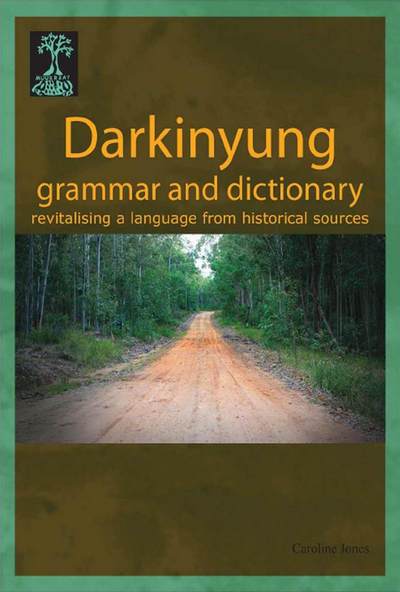Late in the nineteenth century, probably on the left bank of the Hawkesbury River, Tilly Clarke and Annie Barber took the trouble to teach a surveyor, Robert H. Mathews, something of their language, Darkinyung. He wrote down words, sentences and phrases in his No. 7 notebook, and published a little about it. The notebook is preserved among his papers in the National Library of Australia. This is the main surviving written source for the Darkinyung language.
On Monday 15 December, at the Ourimbah campus of Newcastle University, the Darkinyung Language Group launched Darkinyung grammar and dictionary: revitalising a language from historical sources, by Caroline Jones. It’s another terrific Muurrbay/Many Rivers product. At the launch, Darkinyung people were centre-stage, but celebrating too were Wiradjuri, Gamilaraay, Gumbaynggirr, non-Aboriginal people, and the staff of Muurrbay and Many Rivers who made the publication possible.

In the Foreword to the book, Bronwyn Chambers writes:
I asked dad if he had any regrets in his life, and he told me that as an Aboriginal man not knowing his language, being able to speak it or know his stories, songs or dance was what he regretted most. I made a promise to my dad that I would one day revive the language of our ancestors and that one day we would be able to speak our language, teach it to our children and welcome people to our country in our traditional tongue. (p.iii)
And she did it – she welcomed us in Darkinyung. Many wet eyes. It all started in 2003, with the formation of the Darkinyung Language Group. They were inspired by a workshop which Jaky Troy and Kevin Lowe ran, and by seeing what was happening at Muurrbay with reviving other languages. They’re an inclusive group consisting of Aboriginal and non-Aboriginal people from around NSW. They started with half a dozen words, and then they involved Caroline Jones. She tracked down and evaluated the historical sources, and compiled them into the book. Of her involvement they write:
The Darkinyung Language Group would also like to show their appreciation to the wonderful author and linguist Dr Caroline Jones. Her understanding and respect for the Darkinyung people and the language group is a true testament to her character and over the past four years she has become an integral part of the language group (p.ix)
The book consists of three parts, a discussion of the historical sources which provides the necessary connection to the past, a description of the sound system and the grammar (giving the sentences and words both in the original spelling systems and in the modern spelling system), and then the material itself – organised in different ways. First, the 549 words, phrases and sentences from the No.7 notebook, original spelling, modern spelling, original gloss, reinterpreted gloss. Then ten words and phrases of the “Wollombi tribe” recorded by Eliza Dunlop. Then nine words and phrases from Tuckerman in Curr. Then vocabulary organised alphabetically by Darkinyung, by English, by topic, and then a final list by Darkinyung with the original sources.
The emphasis is on balancing reliability and completeness, while at the same time, thanks to feedback from Madelene Davy of the DLG, it has been made more accessible to Darkinyung people. Muurrbay and Many Rivers did an excellent job of the proofing, copy-editing, typesetting and printing.
Whether or not Uncle Ken Walker’s wish comes true, “One day English won’t be our first language, but our second language”, this book is, as the launcher, Karen Jones, (NSW Department of Education and Training) said, a gift from the present to the future. “It’s not just about words, it’s about family”. And so, in the acknowledgments appears
The group would also like to give a special mention to Jack Chambers, a proud Darkinyung gudjagang who was the first person at the age of two to speak in the revitalised Darkinyung language. The first word he said was badhu meaning water. (p.viii)
 Follow
Follow